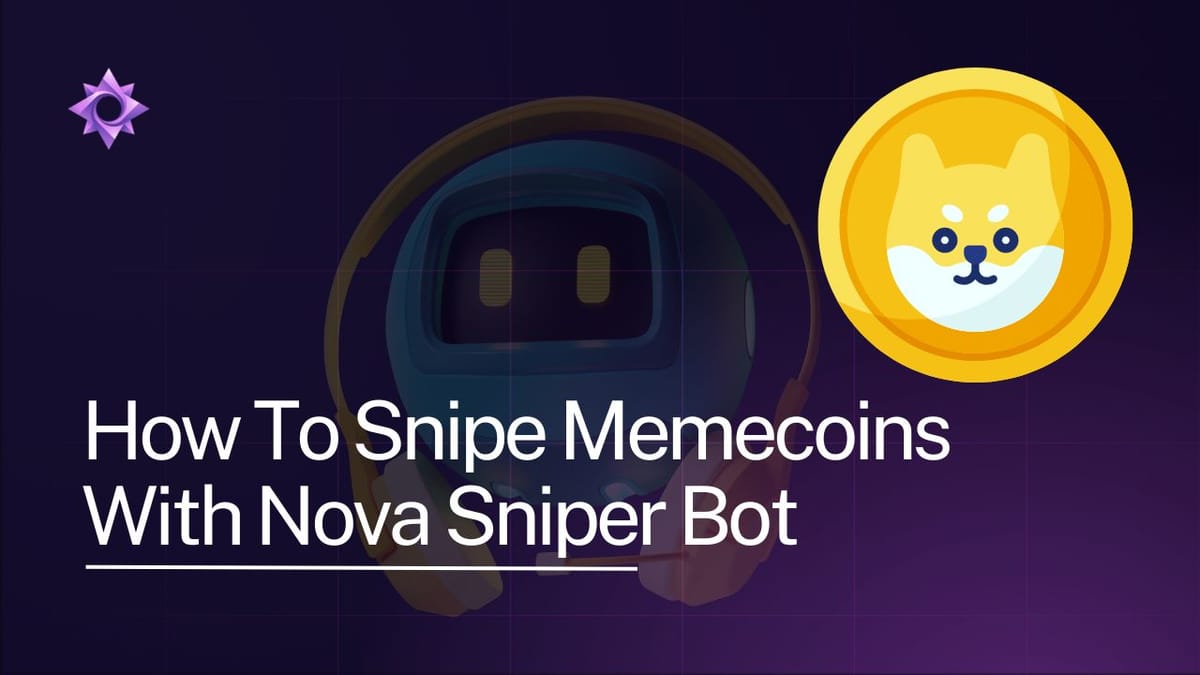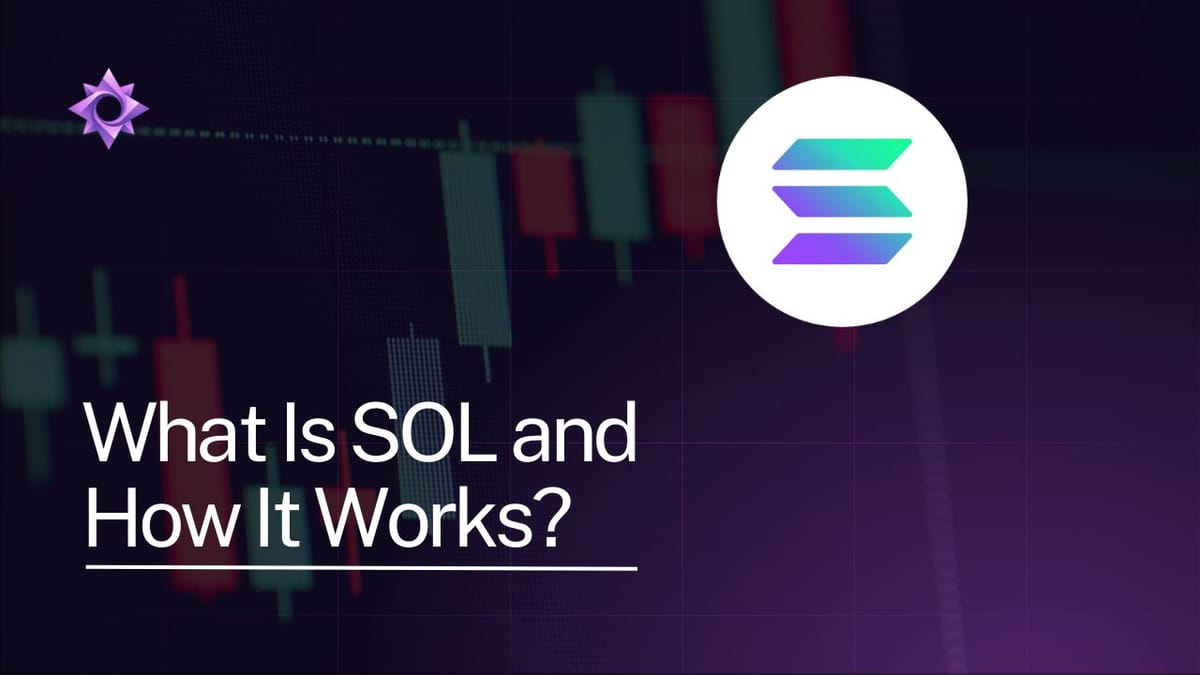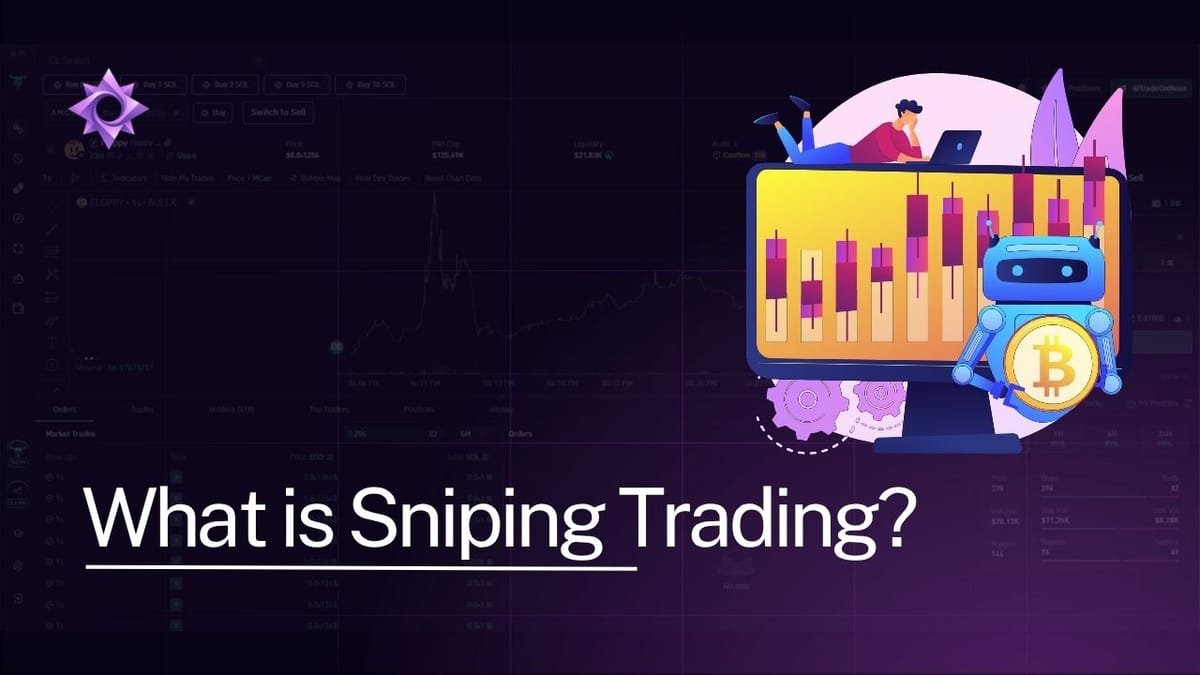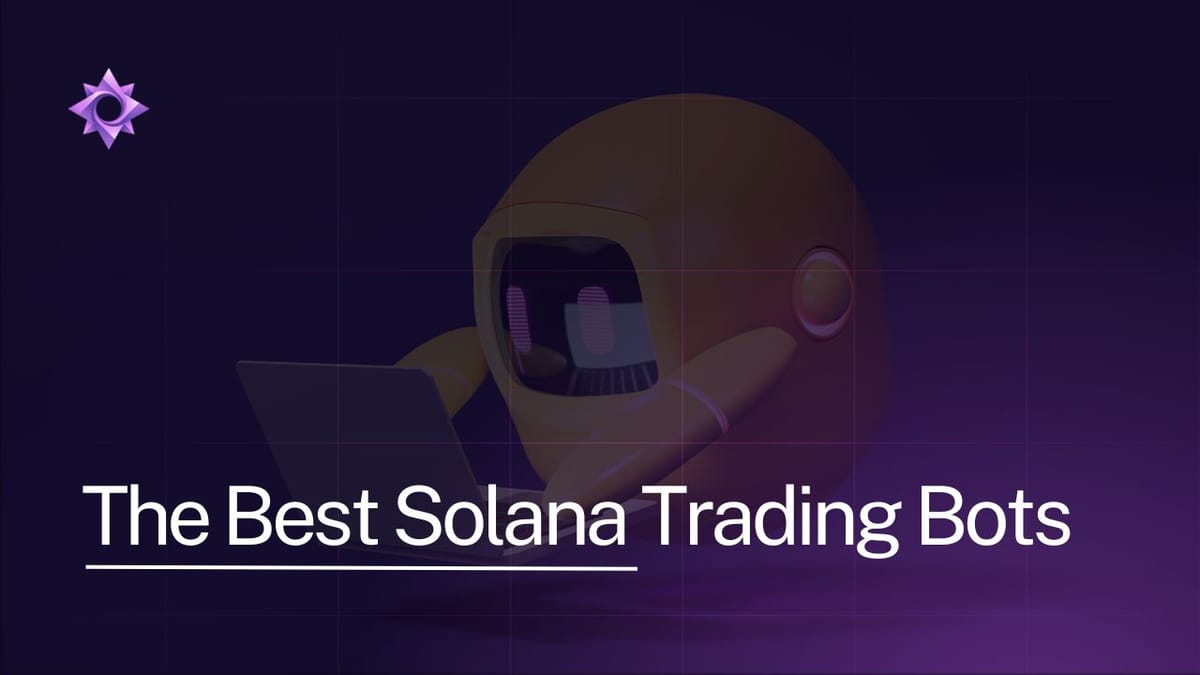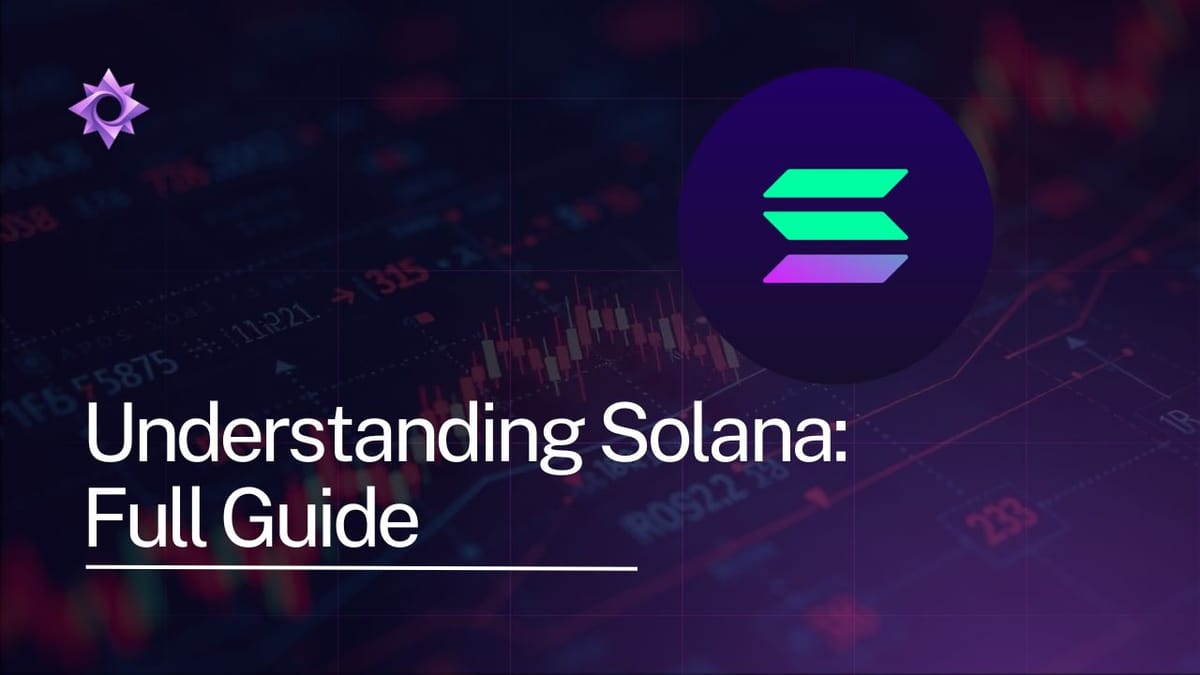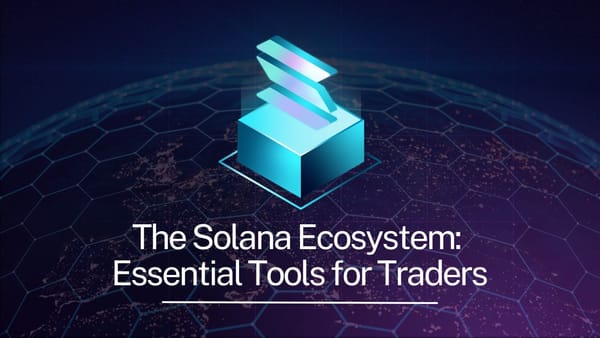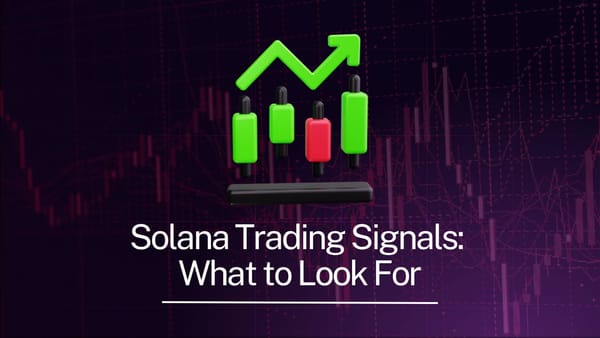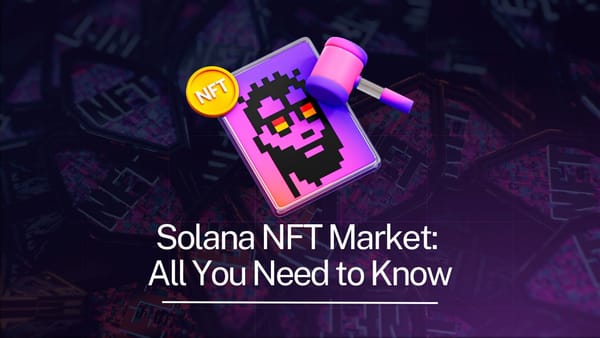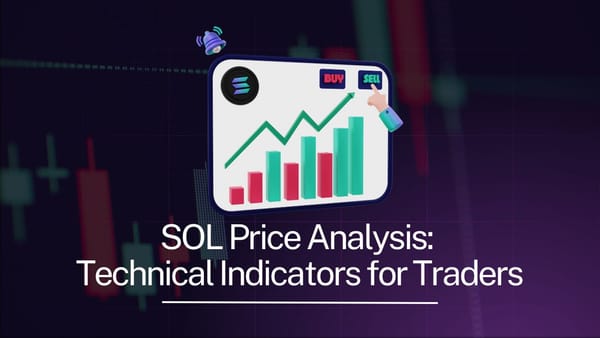What Is a Double Bottom in Crypto Trading
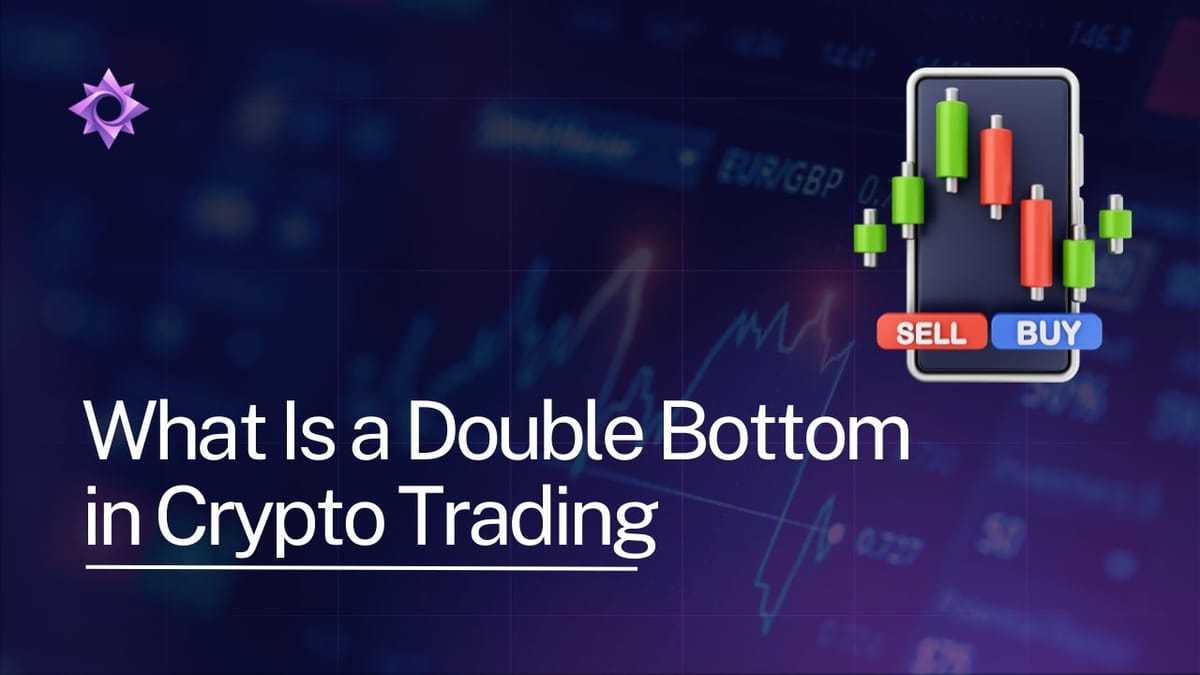
So, you're curious about what a double bottom is in trading, especially in the wild world of crypto? Think of it like this: you're watching a stock or a crypto coin's price, and it drops, then bounces back up a bit. Then, it drops again, almost to the same low point, and bounces back up again. That sort of 'W' shape on the chart? That's generally what we're talking about. It's a pattern traders look for, and it often signals that a price might be ready to go up instead of continuing to fall. Let's break down what it looks like and how you might use it.
Key Takeaways
- A double bottom looks like a 'W' on a price chart, showing two distinct low points at roughly the same level.
- This pattern often suggests that a downtrend is ending and a new uptrend might be starting.
- You'll want to see the price break above a 'neckline' – a resistance level between the two bottoms – for confirmation.
- Traders often enter a trade after the breakout and set stop-loss orders below the recent low to limit potential losses.
- Factors like trading volume and overall market mood can affect how reliable a double bottom pattern is.
Understanding The Double Bottom Pattern

So, you're looking to get a handle on the double bottom pattern in crypto trading? It's a pretty common sight on charts, and understanding it can really help you spot potential shifts in the market. Think of it as a chart formation that suggests a downtrend might be running out of steam and could be about to turn around. It's a bullish reversal pattern, meaning it usually pops up after prices have been falling for a while.
Defining The Double Bottom
At its core, a double bottom is a chart pattern that looks a bit like the letter 'W'. It's formed when a cryptocurrency's price drops to a certain low point, bounces back up a bit, then falls again to a similar low point, and finally bounces back up more strongly. This second low, which is roughly at the same price level as the first, is what gives the pattern its name. It's a sign that sellers might be losing their grip and buyers are starting to step in. This pattern is recognized as a bullish reversal pattern, indicating a potential upward trend in the market.
Visualizing The Pattern's Formation
Imagine a crypto asset has been in a downtrend. It hits a low, let's call it Low 1. Then, it rallies a bit, but not enough to signal a real trend change. After that, it falls back down, testing that previous support level. If it holds again, forming Low 2 at roughly the same price as Low 1, you're starting to see the 'W' shape. Between these two lows, there's a peak, which acts as a resistance level. The pattern is considered complete, and the bullish reversal is confirmed, when the price breaks above this resistance level. This is where tools like the Nova Trading Bot can be helpful, automating entries once a pattern is confirmed.
Key Characteristics Of A Double Bottom
There are a few things to keep an eye out for:
- Two Troughs: As mentioned, you need two distinct lows at roughly the same price level. These are the 'bottoms' of the 'W'.
- A Peak: There's a rally between the two troughs. This peak forms a resistance level.
- Volume: Often, volume will be higher on the second trough's rally and especially on the breakout above the resistance level. This shows increased buying interest.
- The Neckline: This is the resistance level formed by the peak between the two troughs. A break above this line is a key confirmation signal.
The formation of a double bottom suggests that the market has tested a particular price level twice and found significant buying support at both instances. This repeated rejection of lower prices indicates a potential shift in supply and demand dynamics, favoring buyers.
The pattern is considered complete and signals a potential trend reversal when the price breaks decisively above the neckline. This break should ideally be accompanied by increased trading volume, adding conviction to the move. It's a classic indicator that the previous downtrend might be over. Understanding these characteristics is the first step to spotting this potentially profitable pattern on your charts. You can find more information on chart patterns to help you identify them.
Identifying A Double Bottom In Crypto
So, you've seen a crypto chart that looks like a 'W', and you're wondering if it's a double bottom. Let's break down how to spot one. It's not just about two dips; there are a few things to look for.
Recognizing The Two Troughs
The first part of identifying a double bottom is pretty straightforward: you need to see two distinct lows, or troughs, on the price chart. These lows should be roughly at the same price level. Think of it like the price hitting a floor, bouncing up a bit, then falling back down to that same floor before bouncing up again. The space between these two troughs is important too; it's usually a few weeks or months, depending on the timeframe you're looking at. If the lows are too close together or too far apart, it might not be a true double bottom. You're looking for a pattern that suggests the selling pressure is really struggling to push the price lower.
The Role Of The Neckline
Once you've got your two troughs, the next step is to find the 'neckline'. This is basically a resistance level that connects the peak between the two troughs. Imagine drawing a horizontal line from the highest point reached after the first trough and before the second trough. This line is your neckline. The price needs to break above this neckline to confirm the pattern. Until that happens, the double bottom isn't complete, and the trend might not actually reverse. It’s a key indicator that buyers are gaining strength.
Confirmation Signals For Traders
Just seeing the 'W' shape and a break above the neckline isn't always enough. You want to see other signs that the bullish reversal is likely to stick. Volume is a big one. Typically, you'll see higher trading volume when the price breaks above the neckline compared to when it was forming the troughs. This shows more people are jumping in on the upward move. Some traders also look for other indicators, like the Relative Strength Index (RSI) moving out of oversold territory. Tools like Nova Click can help you monitor these signals quickly, especially if you're trading on fast-moving chains like Solana. It’s all about gathering evidence that the downtrend is really over and a new uptrend is starting. You can learn more about common chart patterns like these on crypto charts.
It's easy to get excited when you see a potential double bottom, but remember that no pattern is foolproof. Always wait for confirmation before making any trading decisions. Patience is key in crypto trading.
Interpreting The Double Bottom's Significance

So, you've spotted what looks like a double bottom pattern on your crypto charts. What does it actually mean for your trading? This pattern is generally seen as a strong signal of a potential trend reversal. It suggests that the downward momentum that led to the formation of the two troughs is losing steam. Buyers are stepping in at these lower price points, showing increased interest and pushing back against the sellers. Think of it like a market taking a breather and then deciding to change direction.
Indicating A Potential Trend Reversal
When you see a double bottom, it's a good indicator that a downtrend might be coming to an end. The price has tested a certain support level twice, and each time, it bounced back up. This repeated rejection of lower prices shows that there's solid buying interest at that level. It’s not a guarantee, of course, but it’s a pretty common sign that the bears might be losing their grip and the bulls are getting ready to take over. This is why many traders look for this pattern when they're trying to catch the beginning of a new uptrend, perhaps using a tool like Nova Click to help spot these opportunities.
The Psychology Behind The Pattern
From a psychological standpoint, the double bottom reflects a shift in market sentiment. The first trough happens as sellers push the price down. Then, buyers step in, causing a temporary rally. But if selling pressure returns, the price drops again to test that same support level for the second trough. If buyers defend that level again, it builds confidence. Traders who missed the first bounce might jump in on the second, seeing it as a confirmation that the worst is over. This increased buying activity can create a snowball effect, pushing the price higher.
Bullish Implications For Investors
For investors, spotting a double bottom can be quite encouraging. It suggests that an asset might be undervalued and poised for growth. After a period of decline, this pattern offers a glimmer of hope for a recovery. It’s a sign that demand is building, which is exactly what you want to see if you're looking to profit from an upward price movement. It’s a classic example of how chart patterns can help you anticipate future price action, and understanding them can really help your crypto trading strategy.
Here’s a quick look at what happens:
- First Trough: Price hits a low, then bounces.
- Rally: Price moves up to a resistance level.
- Second Trough: Price falls back to the same low, bounces again.
- Breakout: Price moves above the resistance level, confirming the pattern.
The double bottom pattern is a visual representation of the market's struggle between buyers and sellers. When buyers consistently defend a price level, it signals a potential shift in control from sellers to buyers, paving the way for an upward move.
Trading Strategies With Double Bottoms
So, you've spotted a double bottom pattern forming on your crypto chart. That's great! Now, how do you actually trade it? Let's break down some strategies.
Entry Points For Long Positions
When you see that second trough form and the price starts to bounce back up, you're looking for a good time to get in. The most common entry point is after the price breaks above the neckline. This neckline is that resistance level connecting the peaks between the two troughs. Think of it as the confirmation that the downtrend might be over. Some traders like to wait for a clear break and maybe even a small pullback to that neckline before entering a long position. Others might enter as soon as the price starts moving decisively upwards from the second trough, especially if they're using tools like NovaClick to get real-time market insights.
Setting Stop-Loss Orders
Risk management is super important, right? You don't want to get caught out if the pattern doesn't play out as expected. A common place to set your stop-loss order is just below the second trough. This way, if the price falls significantly below that low point, you're out of the trade with a controlled loss. It’s a way to protect your capital while you wait for the pattern to confirm. You can also consider placing it below the neckline if you want a bit more room, but that increases your potential loss if the price reverses sharply.
Profit Target Determination
Okay, so you're in the trade, and your stop-loss is set. What about taking profits? A typical way to set a profit target is to measure the height of the pattern (from the troughs to the neckline) and add that distance to the breakout point of the neckline. So, if the distance from the trough to the neckline is $100, and the neckline breaks at $500, your initial target would be around $600. Many traders also use trailing stops, which can be managed effectively with automated systems, to capture further upside if the trend continues. This is where understanding how to use NovaClick with platforms like BullX can really help automate your strategy, allowing for efficient execution and monitoring of trades across various market conditions.
Remember, no pattern is foolproof. Always combine your analysis with other indicators and consider the overall market sentiment. It's about making informed decisions, not just blindly following a chart formation. This is why understanding common crypto trading chart patterns is so important.
Here’s a quick look at potential entry and exit points:
- Entry: After a confirmed breakout above the neckline.
- Stop-Loss: Placed below the second trough.
- Profit Target: Measured by the height of the pattern added to the neckline breakout point.
This approach helps you manage risk and aim for potential gains when you spot a double bottom. It’s a solid strategy for those looking to capitalize on potential trend reversals in the crypto market. For those interested in rapid entries, strategies like token sniping might also be considered, though they come with their own set of risks and require extreme speed and precision.
Factors Influencing Double Bottom Reliability
So, you've spotted what looks like a double bottom pattern. That's great! But how reliable is it, really? A lot goes into making this pattern a solid signal for traders. It's not just about seeing two dips; you have to look at the whole picture.
Volume Analysis During Formation
Volume is a big deal when a double bottom is forming. Ideally, you want to see higher volume on the breakout above the neckline than on the second trough. Lower volume on the second dip suggests that sellers are losing steam. When the price then moves up and breaks through the resistance (the neckline), a surge in volume confirms that buyers are stepping in with conviction. If the volume stays low throughout the pattern's formation and breakout, it might mean the move isn't as strong as it appears. Think of it like this: the first dip might have a lot of selling, the peak a bit of a pause, and the second dip should show less selling pressure. Then, the move up needs a crowd of buyers to really push it. Watching how much trading activity happens at each stage gives you a much clearer idea of whether the pattern is likely to play out. It’s a key indicator to check, especially if you’re trading something like Solana (SOL), which can be quite volatile. You want to see that buying interest confirmed by trading volume, and tools that help filter out noise can be really useful here, like those offered by NovaClick's filters.
The Impact Of Market Sentiment
Market sentiment plays a huge role. If the overall market is bearish, even a textbook double bottom might struggle to reverse a strong downtrend. Conversely, in a bullish market, a double bottom can be a powerful signal for continuation or a stronger reversal. You need to consider the broader economic news, any major announcements related to the specific crypto you're watching, and general investor psychology. Is everyone feeling optimistic, or is fear driving the market? A double bottom forming during a period of widespread fear might be less reliable than one appearing when sentiment is already starting to turn positive. It’s about whether the underlying mood supports a price increase.
Timeframe Considerations
Double bottoms can appear on any chart timeframe, from minutes to months. However, patterns on longer timeframes (like daily or weekly charts) are generally considered more significant and reliable than those on shorter timeframes (like hourly or 15-minute charts). A double bottom on a weekly chart suggests a more substantial shift in buyer and seller dynamics, potentially leading to a larger price move. Shorter-term patterns can be more prone to false signals or be influenced by temporary market noise. So, while you might see a double bottom on a 5-minute chart, it might not have the same predictive power as one forming over several weeks. It’s always good to check multiple timeframes to get a better sense of the overall trend and the pattern's context. The formation of a double bottom suggests that buyers have absorbed selling pressure at key support levels, indicating a potential bullish reversal.
Distinguishing Double Bottoms From Similar Patterns

Double Tops Versus Double Bottoms
It’s easy to get your chart patterns mixed up, especially when you’re just starting out. You’ve probably heard about double bottoms, those bullish reversal patterns that look like a "W." They signal that a downtrend might be ending and an uptrend is about to begin. But what about their opposite, the double top? That’s a bearish reversal pattern, and it looks more like an "M." It suggests that an uptrend might be topping out and a downtrend could be starting. So, when you see a price hit a resistance level twice with a dip in between, that’s a double top. If it hits a support level twice with a bounce in between, that’s your double bottom. Knowing the difference is pretty important for making smart trades. You can find more about these patterns on sites that cover crypto chart patterns.
Avoiding False Signals
Sometimes, a pattern might look like a double bottom, but it’s not the real deal. These are called false signals, and they can really mess with your trading plan. A true double bottom usually forms after a significant downtrend. The two troughs should be roughly at the same price level, and there should be a clear peak, or neckline, between them. The volume is also a big clue. Typically, volume is higher on the second trough’s formation and then increases as the price breaks above the neckline. If you don't see these things, it might be a fake-out. You need to be patient and wait for confirmation. For instance, if the price breaks decisively above the neckline with good volume, that’s a strong sign you’re looking at a genuine double bottom pattern.
The Importance Of Context
Even with all the rules, context is king in trading. A double bottom pattern doesn't exist in a vacuum. You have to look at the bigger picture. What was the market doing before the pattern formed? Was there a long downtrend? What’s the overall market sentiment like? Is everyone feeling super bearish, or is there a bit of optimism creeping in? Sometimes, patterns can look similar to others, like an inverse head and shoulders, which also signals a bullish reversal but has three troughs instead of two. You need to consider the timeframe you’re looking at, too. A double bottom on a 5-minute chart is different from one on a daily chart. You might want to check out resources that explain inverse head and shoulders to see how it differs. Ultimately, combining pattern recognition with broader market analysis and risk management is how you avoid getting caught by false signals and make better trading decisions.
Understanding the difference between a double bottom and similar chart patterns is key for traders. These formations can signal a potential trend change, but mistaking one for another can lead to costly errors. Learn how to spot the real deal and improve your trading decisions. Visit our website to dive deeper into identifying these crucial trading signals and boost your confidence in the market.
Conclusion
So, that's the lowdown on the double bottom pattern. You've seen how it looks and what it might mean for crypto prices. Remember, it's just one tool in your trading kit. Don't bet the farm on it alone. Always mix it with other indicators and do your own research before making any moves. Think of it as a helpful signpost, not a crystal ball. Keep practicing, keep learning, and you'll get a better feel for how these patterns play out in the wild world of crypto.
Frequently Asked Questions
What exactly is a double bottom pattern?
Imagine you're watching a price chart. A double bottom looks like the letter 'W'. It means the price dropped, bounced back up a bit, dropped again to about the same low point, and then bounced back up strongly, often signaling that the price might start going up instead of down.
How can I spot a double bottom on a crypto chart?
You'll spot it when the crypto's price hits a low point, then goes up a little, and then falls back down to that same low point again. Think of it like the price testing the same support level twice. After the second test, if it bounces back up with good buying energy, you've likely found your double bottom.
What's the neckline, and why is it important?
The most important part is the 'neckline.' This is an imaginary line drawn across the highest point between the two dips. When the price breaks above this neckline with strong buying power, it's a big sign that the pattern is complete and the price is likely to keep going up.
Does a double bottom mean the price will go up?
Yes, it suggests a change from a downtrend to an uptrend. It's like the sellers tried twice to push the price lower but failed, and now the buyers are taking control. It's a bullish signal, meaning good things might be coming for the price.
How should I trade when I see a double bottom?
You'd typically want to buy after the price breaks above that neckline we talked about. It's also smart to set a stop-loss order just below the lowest point of the pattern. This way, if the price suddenly drops again, you won't lose too much money.
What else should I consider besides the 'W' shape?
You need to look at more than just the shape. Check if the trading volume (how much of the crypto was bought and sold) was high when the price bounced up from the second bottom and broke the neckline. Also, see if the overall news and feeling about the crypto are positive. This helps confirm that the pattern is real and not just a random blip.
More Nova Click Guides:
